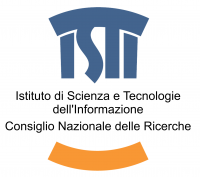Ulla Maarit Rajala, Jorn Seubers
Recently, scholars have been using different digital methods at different scales in exploring the birth and development of protourban centres in Italy and beyond. These approaches include the contributions from single scholars using GIS modelling (Fulminante 2014; Rajala 2004; 2013) and network analysis (Fulminante 2012) in analysing and explaining the conditions for the late prehistoric settlement changes and the growth of the protourban centres in Tyrrhenian Italy, but also larger projects with multidisciplinary and interdisciplinary teams. For example, the American team at Gabii, the British teams at several smaller sites and the Dutch team at Crustumerium (e.g. Attema and Seubersin press). have used multiple methods and innovative techniques in data collection and analysis.
In this session we try to bring together different scholars and teams applying new digital methodologies such as GIS, network analysis or geophysical prospection combined with surface collection and spatial analysis. The session organisers are specialized in central Italian archaeology, but they wish to present a comparative overview of similar approaches across the Mediterranean, Near East and further afield. The methods presented can include innovative sampling techniques, predictive modelling, prospection, intra-site analysis and explorative 3D modelling. Special attention will be placed on the importance of these methods in answering specific archaeological questions and the use of results as evidence in argumentation.
Keywords: archaeological computing, GIS, prospection, analysis, protourban centres
References
- Attema, P., and Seoubers, J., in press (eds.). Proceedings of the Italian urbanisation and state formation workshop, Groningen 2013.
- Fulminante, F., 2014. The Urbanisation of Rome and Latium Vetus: From the Bronze Age to the Archaic Era. Cambridge: Cambridge University Press.
- Fulminante, F., 2012. ‘Social Network Analysis and the Emergence of Central Places A Case Study from Central Italy (Latium Vetus)’, Babesch 87, 27–53.
- Rajala, U., 2013. ‘The concentration and centralisation of late prehistoric settlement in central Italy: the evidence from the Nepi Survey’, Papers of the British School at Rome 81, 1–38.
- Rajala, U., 2004. ‘The landscapes of power: visibility, time and (dis)continuity in central Italy’, Archeologia e calcolatori 15, 393–408.


